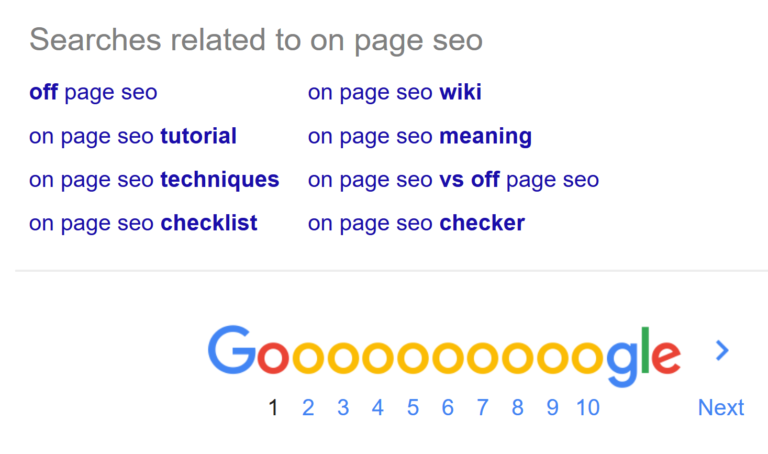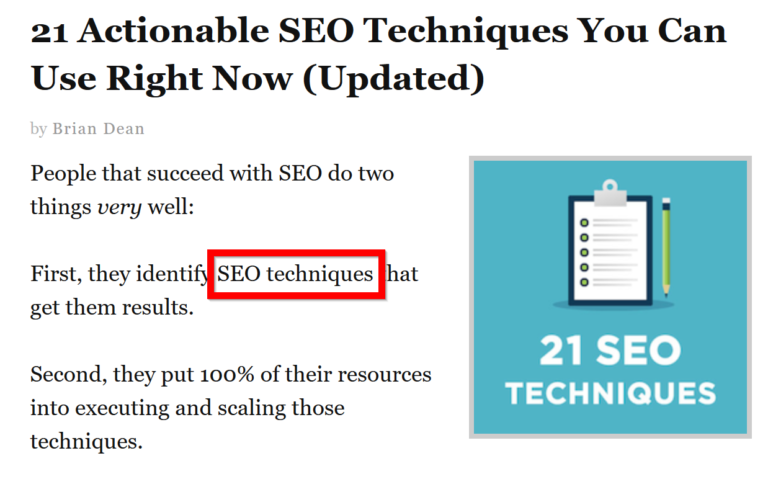SEO in website development in 2017
Use Internal Links
Internal linking is SO money. Use 2-3 in every post. In the event you would like to see a fantastic example of how to internal link on your internet site, check out Wikipedia.
They add keyword-loaded internal links to every entry: Because they’re Wikipedia clearly, they are able to get away with 50 internal links per page. I advocate a simpler (and safer) strategy: link to 2-5 mature posts whenever you publish a new one.
Sprinkle LSI Key Words
LSI key words are synonyms that Google uses to determine a page’s relevancy (and possibly quality). Scatter them into every post.
I do because I generally write REALLY long content, n’t go nuts about LSI keywords.
(Long content increases the likelihood that you’ll naturally use LSI keywords). But should you want to make 100% certain that you’re using LSI key words, search for your keyword in Google and scroll down to the “Searches Related to…” place at the bottom of the page: Toss one or two of these into your post.

Use Societal Sharing Buttons
Societal signals might not play an immediate role in ranking your website. But shares that are societal create more eyeballs on your content.
And the more eyeballs you get, the more likely someone is to link to you personally. So don’t be shy about putting societal sharing buttons prominently on your own website. The truth is, a study by BrightEdge found that societal sharing cans raise by 700%.
Societal signals aren’t an essential part of the Google algorithm. But social shares on sites like Twitter Facebook and Google may give you an indirect rankings boost.
Use Reactive Layout
Google started penalizing unfriendly sites that were mobile in 2015. And they crack down even more later on. If you prefer to make your website mobile-friendly, Responsive Design is recommended by me.
I’d be surprised if your website isn’t mobile- friendly. But when it isn’t, maybe the motivator of more search engine traffic will motivate you to take the jump.
And if you’re going to generate your site mobile-friendly, I STRONGLY recommend layout that is reactive. For user experience, it’s perfect in my opinion. It is preferred by plus Google.
Shed Keyword in First 100 Words
Your keyword should appear in the first 100 -150 words of your article. example of utilizing key word in first 100 words That is a thing that you likely do naturally.
But lots of individuals use their key word for the first time and begin away their posts using a long CONSIDERABLY later.
Instead, drop your key word somewhere in the first 100 words or so. This helps Google comprehend what your page is really all about.

Dazzle with Multimedia
Text can only take your articles to date. Engaging pictures, diagrams and videos can reduce increase time and bounce rate on site: two crucial user interaction variables that are ranking.
That’s because I steadfastly think that my content is made by it straight upward better.
But it has a pleasant SEO advantage to boot: multimedia helps you boost those user-interaction signals that Google has been paying a lot more attention to. And it raises the perceived value of your content –which means that individuals tend to be prone to link to it.
Post Long Content
The SEO adage “length is strength” was supported by our industry study which found that content that is longer has a tendency to rank higher on Google’s first page.
Target for at least 1900 words for each piece of content which you publish. As a rule, I make sure my articles all have 1000 words of meaty, content that is useful.
Content that is more can help you rank better for your target keyword and brings a win-win!

/image%2F2388861%2F20170527%2Fob_c9221e_2017052519.jpg)
/https%3A%2F%2Fmasterseo.ca%2Fwp-content%2Fuploads%2F2017%2Franksoftware%2FGROWRANK.png)
/https%3A%2F%2Fmasterseo.ca%2Fwp-content%2Fuploads%2F2017%2Fseowebdesign%2FPartial-Use-of-JavaScript.jpg)
/https%3A%2F%2Fmasterseo.ca%2Fwp-content%2Fuploads%2F2017%2Fplugins%2FRemove-Query-Strings.jpg)
